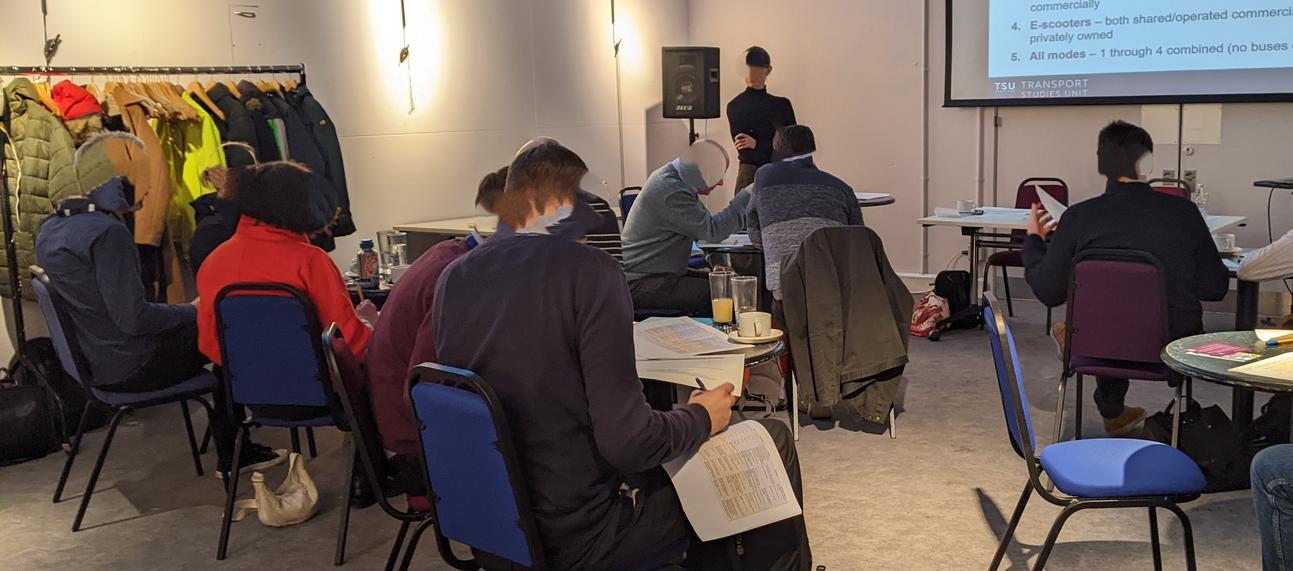Making Sense of Policy Mixes
In our third stakeholder workshop in Bristol we evaluated policy mixes for electric mobility and how to improve them.
Policy mixes are the complex arrangement of objectives or goals and the instruments or measures devised to achieve them. They are not policy processes, although they develop over time, as outputs from ongoing political and technocratic processes and cycles. They are not policy strategies, although strategy documents often contain lists of goals and references to instruments.
Policy mixes cannot be found in one document – their component parts are spread across strategies and funding bids, guidance and even press releases. Policy mixes are not the responsibility of any individual policymaker – the expertise and resources to prioritise goals and to design and deliver the instruments lie with an array of teams at different levels of governance and across private and third sector, as well as public sector organisations.
Thus, compiling the policy mixes for the electrification of private and shared passenger transport in Bristol and its hinterland was a challenging task. We identified thirty individual policy instruments and grouped them, with some duplication where appropriate, by four modes: private vehicles (including those used for business and taxis), car-sharing, e-bikes, and e-scooters. Each instrument was categorised and listed with its intended goals; its spatial extent and timescale; and its consideration of the distributional, recognition, and participation dimensions of social justice.
The resulting spreadsheet was described as impressive or intimidating – or both! Explaining its contents at our third policy and governance workshop for the ITEM project was not simple. And this despite the fact that all eleven participants were involved with developing policy strategies and goals or implementing policy instruments or lobbying for policy improvements on behalf of particular user groups.
Nonetheless, we not only explained it, but asked the participants to score the policy mixes according to the complementarity of instruments, the coherence of goals, the alignment between instruments and goals, and the implications for distribution, recognition and participation for each mode and all modes together. Academics have attempted to undertake this sort of task to better analyse how policy has driven or could better drive change. We wanted to go one step further and not just analyse as academics, but also encourage action among policymakers. So we guided our participants through the task. We asked them to consider how they could consciously and strategically improve the policy mixes.
One rewarding result of taking this approach was through our work – and our excessively small-print spreadsheet – they could see that lots of great initiatives were happening in Bristol. Their views were broadly positive that the policy mixes showed consistent goals, with instruments reinforced more than undermined, and that whilst more could be added, there was not so much to take away.
Admittedly, the scores for the justice implications were lower – not all the policy mixes were evenly distributed nor recognised every social grouping nor, in particular, enabled much participation or influence in their planning and implementation. Here was room for improvement: finding ways to listen to new voices above the roar from the usual suspects, relying less on digital tools.
As the discussion moved to strengthening the policy mixes, the ever-present spectre of insufficient funding reared its head. Policy instruments and goals might be strategically focused in principle, but if they were not properly funded, then how could they ever extend to all the places and people needed to be just? Could creative distribution of funds help? Just as evaluating policy mixes rather than isolated instruments reveals synergies as well as gaps, so considering how groups rather than individuals are affected could enable recognition of intersecting needs that might be more efficiently met. Likewise, the policy mixes include carrots and sticks. Participants suggested that seeing both on a single page helped them to consider how to match the carrots to where (or whom) the sticks are targeted.
We will be producing a more detailed, structured report of how we evaluated the policy mixes in Bristol and the ideas and recommendations that will accelerate a more inclusive transition to electric mobility in Bristol. But for now, suffice it to say, the first step, making sense of policy mixes together, was completed with a sense of achievement.


